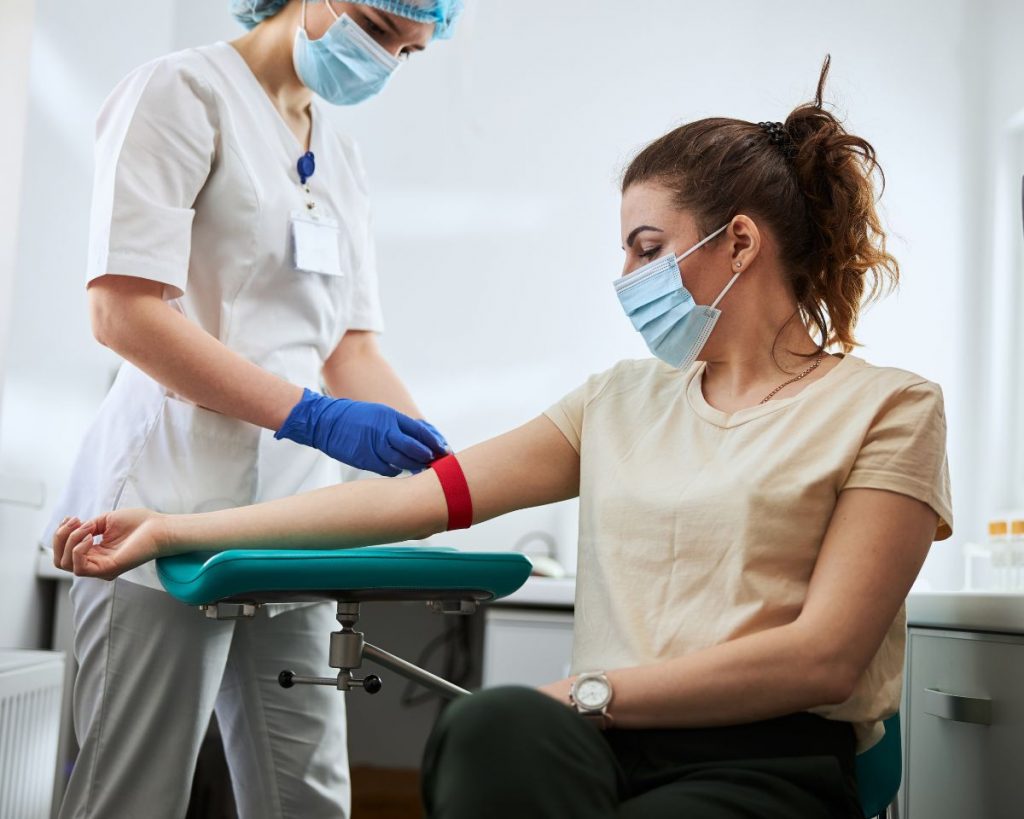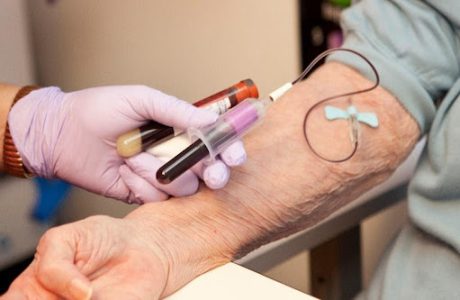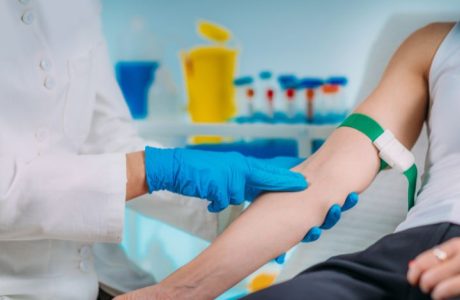Is a phlebotomist the same as a medical lab technician?
You may be wondering, is a medical lab technician the same as a phlebotomist? Although they have similar duties, they are two separate roles.
While both a lab technician and phlebotomist collect blood samples. A phlebotomist works solely with blood samples and does clerical work, and a medical lab technician can deal with all bodily fluids including blood and also runs sample testing.
If you want to pursue a job in healthcare, then knowing the difference between the two is a great start! Both positions involve obtaining blood samples from patients, and they play a crucial role in healthcare because they deal with the collected samples from patients that generate lab results.
So, let’s look closely at these two careers, how they differentiate from one another, and what they do to impact healthcare.
Get started with your Phlebotomist training today!
Difference between Phlebotomists and Lab Technicians on the Job
Now that we know the significant difference between a phlebotomist and a lab technician is the collection of samples from solely blood to all bodily fluids, let’s dive into more differences between the two careers in healthcare.
Phlebotomist:
- Draws blood from patients
- Gathers medical instruments before blood drawn
- Explains the process of collecting blood and samples of patients thoroughly
- Verify patients identify and accurately labels specimens from patients
- Ensures safety protocols are followed: cleanliness and personal hygiene
- Sanitization of space and equipment to draw blood
- Use of equipment appropriately and minimize the number of blood drawn
Medical Lab Technicians:
- Collection of bodily fluid samples from patients, such as urine, tissue, and blood
- Analyze samples in coordination with lab technologist
- Record data and clinical results in patient records
- Using automated equipment to multitask
- Record and maintain any abnormal findings
- Learn and get trained by expert professionals (lab technologists)
A phlebotomist collects the samples but does not test the samples, where a medical lab technician can collect and test the samples. Phlebotomists are also known to assist in clinical work, Medical lab technicians primarily focus on the lab aspect of the job. Although both jobs differ, they can have similar and different work environments.
Ready to begin your training? Contact us today!
Work Environment
Phlebotomists and medical lab technicians are usually employed when samples are needed to be taken and collected. Their workplaces can be similar but also differ due to their job title differences. So here are some similarities and differences between where a phlebotomist and medical lab technician can work:
Phlebotomists could work at:
- Hospital
- Mobile Blood Drives (blood samples)
- Private Doctors Office
- Outpatient Care Centers
Lab Technician could work at:
- Diagnostic Laboratory
- Hospital Laboratory
- Employed by a private lab technician
- Blood and Organ Banks
- Hospital
Educational Requirements
Education is required to perform the job duties of a phlebotomist or a medical lab technician. Both require aspiring healthcare professionals to be enrolled in a training program to better understand and prepare for job responsibilities under the supervision of certified professionals.
A prerequisite requirement is a high school diploma for both jobs.
To inquire about a job as a phlebotomist, you must have a certificate from an authorized institution. Typically, you can complete a phlebotomist certification in as little as 3 weeks, depending on the schedule and pace of a program you select.
A medical lab technician requires additional education (usually an Associate degree program) and one achieves certification from the regulatory body.
Job Outlook
Phlebotomists:
According to the “U.S Bureau of Labor Statistics” Employment of phlebotomists is projected to grow 22 percent from 2020 to 2030, much faster than the average for all occupations.
About 19,500 openings for phlebotomists are projected each year, on average, over the decade. Many of those openings are expected to result from the need to replace workers who transfer to different occupations or exit the labor force, such as to retire.
Medical Lab Technicians:
According to the “U.S Bureau of Labor Statistics” Employment of clinical laboratory technologists and technicians is projected to grow 11 percent from 2020 to 2030, faster than the average for all occupations.
About 25,900 openings for clinical laboratory technologists and technicians are projected each year, on average, over the decade. Many of those openings are expected to result from the need to replace workers who transfer to different occupations or exit the labor force, such as to retire.
Select Training Direct to further your career path as a phlebotomist!
If you are looking for a phlebotomy training program in Connecticut, Training Direct can help you get on your way! Training Direct prides itself in assisting aspiring phlebotomists in entering the healthcare industry.
The Phlebotomy Technician program provides students with the knowledge and skills to pursue entry-level job opportunities. A completed phlebotomy certification will endorse those skills and may help you gain the confidence required to enter the field.
The phlebotomy training program may provide opportunities for a hands-on approach with qualified professionals during clinical placement to provide you with the tools to pursue a rewarding career as a phlebotomist.
If you are ready to begin your phlebotomy training, our team here at Training Direct is prepared to help you get started!





